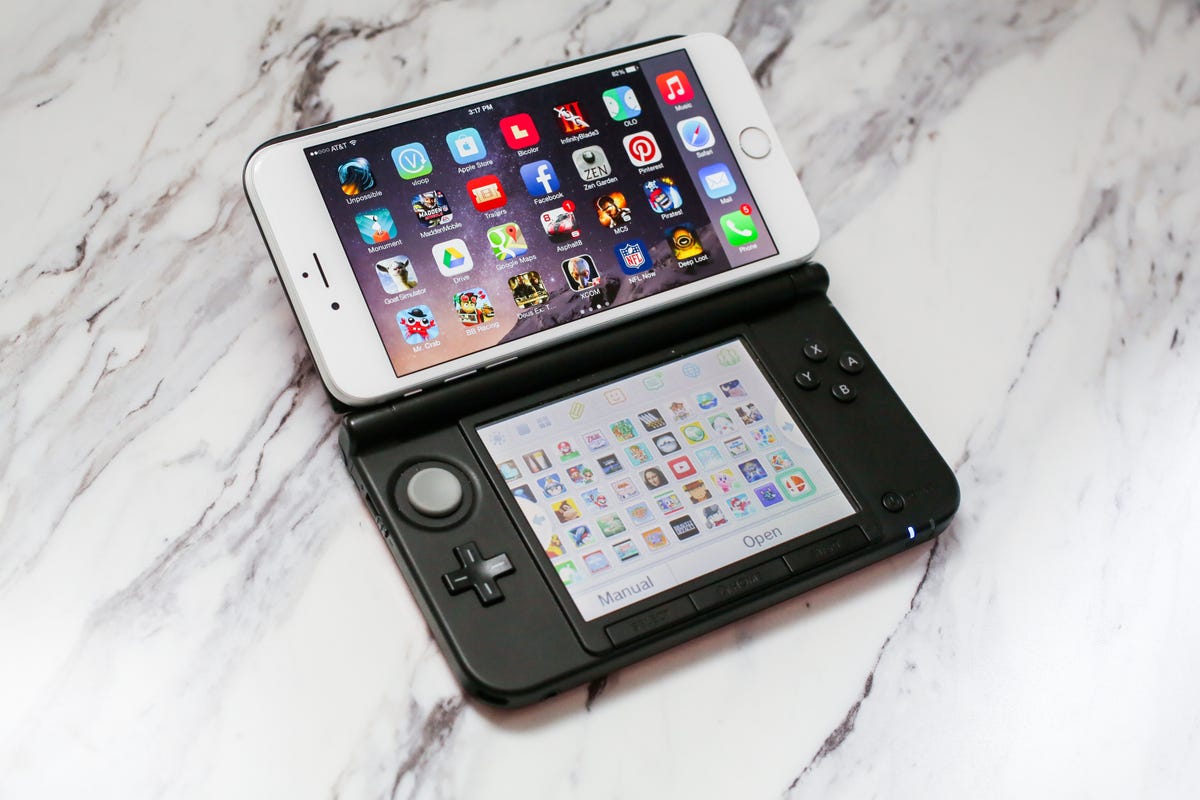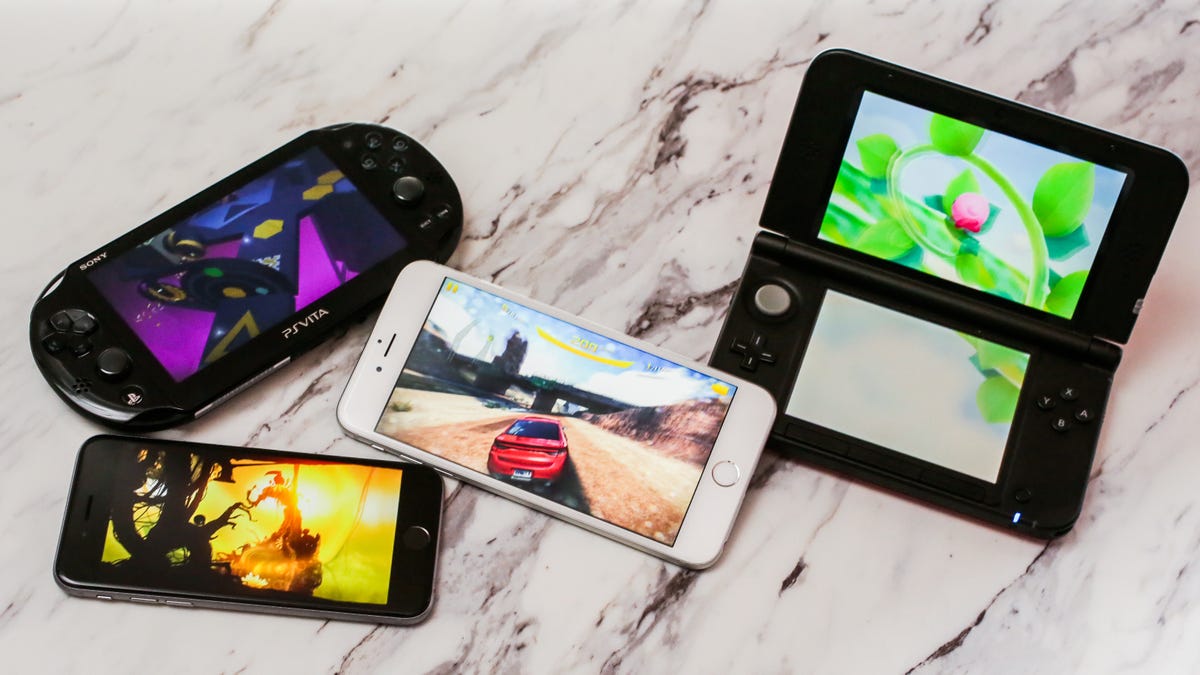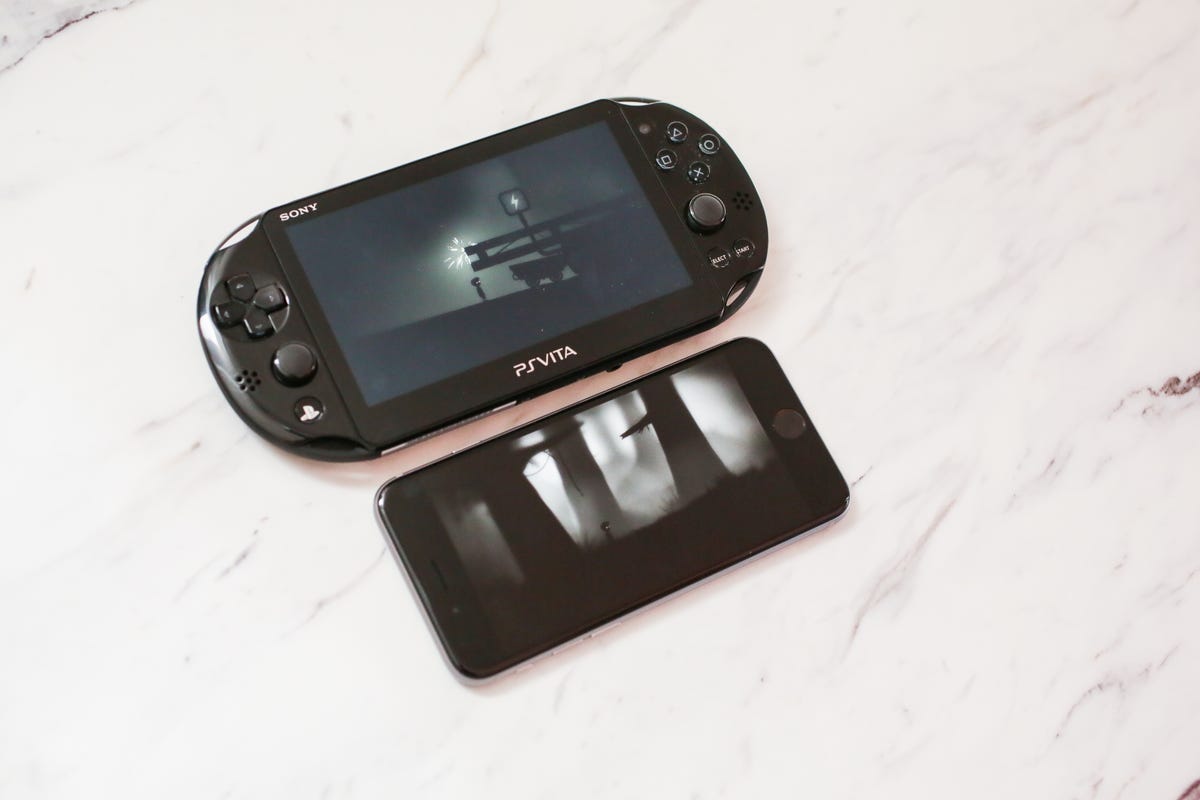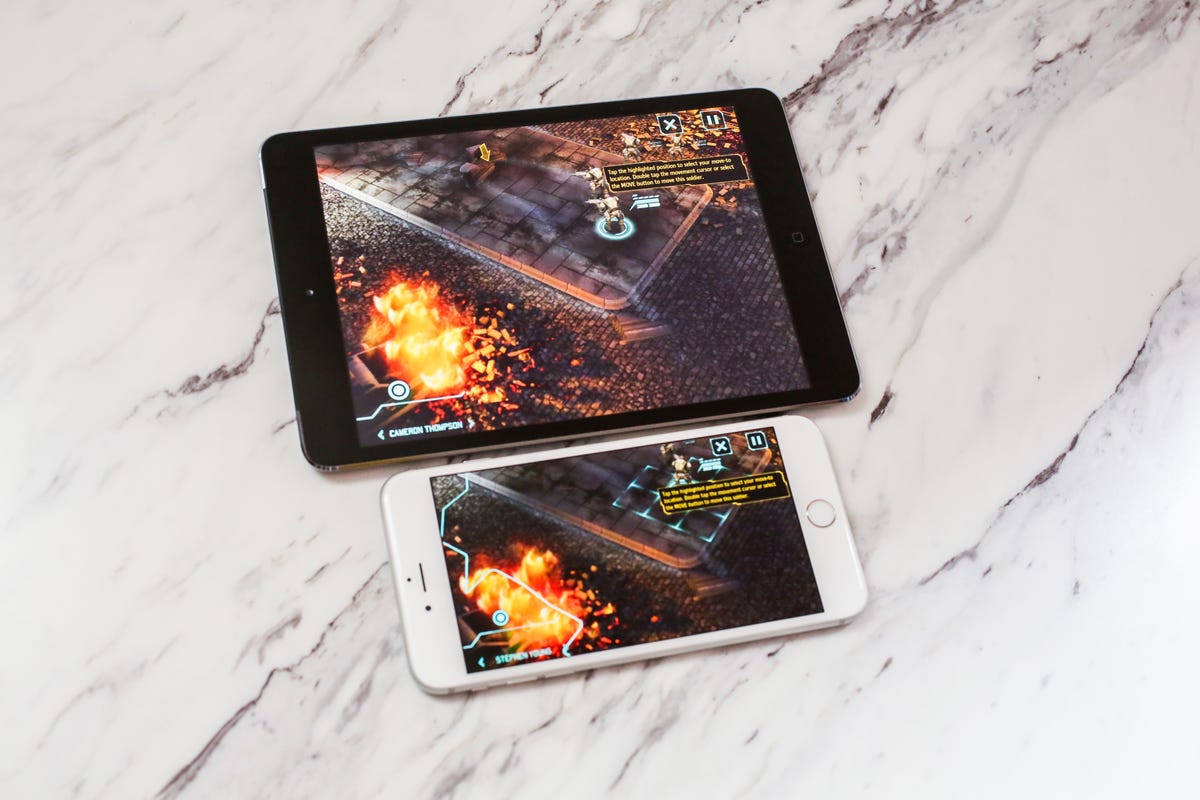
Sarah Tew/CNET
Apple’s iPhones have been great game devices for years. In fact, iPhones are the gadgets that helped reinvent mobile gaming and steer it away from the domain of companies like Nintendo and Sony.
But here’s the truth: I use the iPad Mini more for gaming than I do my iPhone. The reasons are: the iPad can play enhanced games with “made for iPad” layouts, including some games that don’t make the leap to phone at all. The iPad generally has more storage and battery life to burn than my space- and battery-challenged phone. And its screen is bigger.
The new iPhones are improved: they both have bigger screens, and better graphics. But can the new iPhones replace your dedicated gaming handheld altogether?


Sarah Tew/CNET
I use a Nintendo 3DS XL and PlayStation Vita regularly. I love them both. Sure, they’re extra gadgets to pack in a bag. But both have big screens, good dedicated buttons and control sticks, and libraries full of really great retro, indie, and mainstream, dozens-of-hour-of-gameplay games, including many you can’t get anywhere else.
The new iPhones
- iPhone 6: the CNET review
- iPhone 6 Plus: the CNET review
- iPhone 6 Plus versus Samsung Galaxy Note 3
- Why the iPhone 6 Plus can’t replace the iPad Mini yet
The iPhone 6 and iPhone 6 Plus have better processors with enhanced graphics. While the new A8 processor should offer better-looking games than on previous iPhones, the leap isn’t immediate. That’s because, as always, game developers haven’t had a chance to really dig in and make games that run incredibly on the new hardware yet. The optimized games I’ve seen, like Gameloft’s Asphalt 8 and Modern Combat 5, feel like slightly tweaked-up versions that I’ve already played.
Then there’s Metal — Apple’s new-for-2014 toolkit for game developers that’s designed to bring better-looking graphics on iOS games. Epic’s new Zen Garden demo — a pretty demonstration of a virtual zen garden with amazing storms of flower petals — shows off its potential. It’s clear that the iPhone 6 and 6 Plus have graphics capabilities that should trounce the older gaming handhelds. But at this point, creating “even better-looking” games becomes relative: really, I just want the new iPhones to make the most of the added screen real estate.


The bigger and more immediate impact of games on these new iPhones is that they simply look better because the screens are bigger. That matters: the Nintendo 3DS XL just has a physically larger display than the original 3DS, with the same pixel resolution. But it makes games look more immersive, even at a lower pixel-per-inch count. The iPhones do it all a bit better: older games scale up really well to the new 1,344×750 and 1,920×1,080 resolutions, automatically making text look great. Graphics don’t seem to really suffer, since most Retina games already have pretty good resolutions compared to gaming handhelds.
There’s a problem, though: virtual buttons don’t map perfectly. A small d-pad and buttons on an iPhone 5 game end up scaling into huge icons on a 6 Plus. Hopefully future app updates will at least shrink the buttons back down, freeing up a ton of display space on the new phones much like games ended up doing when the larger-screened iPhone 5 debuted. But that’s a waiting game.
I played lots of games on both phones, many of them technically unoptimized, and they all looked great: XCom, Unpossible, Monument Valley, Civilization Revolution 2, 80 Days, and the best iPhone game of all: Goat Simulator.
The iPhone 5 series screens have 1,136×640 resolution spread across 4 inches. The PlayStation Vita has a 960×544 resolution display spread over 5 inches. The Nintendo 3DS XL has a 800×240 resolution spread across a 4.88 inch top display, but some of that resolution gets reduced further by adding a 3D effect.


Sarah Tew/CNET
So, if you expand a 1136×640 resolution across 4.7 inches, or even across 5.5 inches, it still looks really, really good. And obviously, the newer A8 processor can handle older iOS games perfectly. I’d accept these graphics without extra optimizations, as long as developers retweaked the apps to add smaller, more phone-appropriate controls for each screen size.


Sarah Tew/CNET
There are wireless and connected game controllers that work with a growing but limited number of iOS games. But with these iPhones, you’d ideally want a dedicated game controller case. You can’t use any of the existing ones: the 6 and 6 Plus are too big. But at least these phones are thin: a snap-on case might not add a ton of extra thickness, if done right.The iPhone 6 screen size and design make it feel more like a larger iPod Touch than a smartphone, and that’s a really good thing. It’s a lot easier to hold in landscape mode, it has fewer hard edges, and most buttons are out of accidental reach. (The single speaker, however, still ends up being accidentally blocked by my thick palms.) Add a case and it still feels really easy to hold…and still far smaller than either a PlayStation Vita or Nintendo 3DS.


Sarah Tew/CNET
The 6 Plus could be a really killer game device: it’s got a great screen, it feels good to hold in landscape mode, and games feel immersive on its larger display. And, of course, it has a bigger battery. It may not be as ideal for portrait-mode, one-handed games, but as a true game system, it has the right size to be an ideal travel device. But when will games appear that really take advantage of its size? It could take a while. And since it’s still a phone you’re meant to carry every day — not a game system — that extralarge size, while acceptable in a Vita or 3DS XL, ends up feeling a little more awkward.
Since games tend to display at lower resolutions when playing back 3D graphics, the iPhone 6 and 6 Plus end up feeling more similar than you’d expect for now. Even the “smaller” iPhone 6 still feels far better than any previous iPhone for nearly any game. But for now, the games these iPhones play still feel pretty similar to existing iPhone games. Bigger, slightly better-looking…but not quite the same as the larger-canvas iPad.


Sarah Tew/CNET
For now, as good as these new iPhones are at gaming, I might still prefer my dedicated gaming handhelds and the iPad Mini…until killer apps start to appear. But down the road, I could see myself playing a lot more handheld-type games on these than I did before. These are another significant step forward in the evolution of iPhones as killer game systems; perhaps the biggest step yet.



